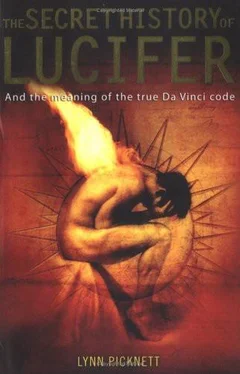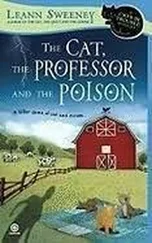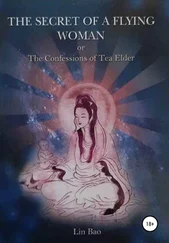79. Churton, p. 100.
80. The important and stunning 1997 film, Photographing Fairies, starring Toby Stephens, Emily Woof and Frances Barber, and directed by Nick Willing, makes this point quite clear. The main character even fails to defend himself against an unwarranted charge of murder because fairyland calls so strongly to him. `Death is merely a change of state. The soul is a fresh expression of the self. The dead are not dust. They really are only a footfall away.'
81. Godfather of British esotericism, John Michell, believes that the gods are reluctant to give occult researchers money because it would make them 'slack'!
82. The Stone of the Philosophers, ascribed to Edward Kelley, which was included in the booklet Tractatus duo egregii, de Lapide Philosophorum, una cunt Theatro astonomniae terrestri, cum Figuris, in gratiam ftliorum Hermetis nunc primum in lucem editi, curante J. L. M. C. IJohanne Lange Medicin Candidato], Hamburg, 1676, translated by L. Roberts.
83. Some say 1595 or 1597.
84. Shakespeare, Epilogue.
85. I myself grew up in a seriously haunted house in the back streets of York. I was about sixteen before I realized that not everyone has a poltergeist! Since those far-off times I have researched and studied the paranormal and have concluded that although many people report ghosts etc out of a desire to cause a stir, or perhaps even to get rehoused by the local council, most have seen something or someone from another dimension. An underlying belief in the reality of intrusion from elsewhere underpins my The Mammoth Book of UFOs (2001), while the strange crossover between a belief in the paranormal and the intelligence agencies is the main theme of my book, co-authored with Clive Prince, The Stargate Conspiracy: Revealing the truth behind extraterrestrial contact, military intelligence and the mysteries of ancient Egypt (1999).
86. Although, interestingly, not all and not on all points. There are modern scholars who privately pursue alchemical, Gnostic and magical studies, but who for obvious reasons - mainly academic funding - would never go public.
87. Churton, The Golden Builders, p. 100.
88. www.johndee.org/charlotte/Chapter7/7pl.html.
89. His companion is often erroneously said to have been John Dee himself.
90. Summers, p. 6.
91. Ibid., p. 256.
92. Automatic writing is a common product of dissociation, deliberate or unconscious. One's hand writes apparently by itself, sometimes in another handwriting style, conveying messages that appear to come from another personality, and giving information that the person holding the pen seemingly could not have known.
93. Guy Lyon Playfair, `This Perilous Medium', The Unexplained, pp. 2934-7, c. 198 1.
94. Ibid.
95. Ibid.
96. Roy Stemman, `The Phenomenal Palladino', The Unexplained, pp. 2241-5, c.1981.
97. Ibid.
98. Ibid.
99. Ibid.
100. Ibid.
101. Suffering from intense religious rapture, Saint Joseph (1603-63) was questioned by the Inquisition, but released. Considered to be simple-minded - as a child he was known as `open-mouth' - he lacked the concentration for the most menial of tasks.
102. Personal conversation between myself and Professor Roy in the early 1980s.
103. Steinman.
104. Ibid.
105. Parapsychologists of the 1980s had a term for this phenomenon: `retrocogni-tive dissonance', meaning the further one moves away in time from witnessing even the most spectacular phenomena, the more one is liable to doubt them.
106. Charles Richet, `On the Conditions of Certainty', PSPR p. 14, No. 35,1899.
107. Dr Margaret Mead, quoted in Archie E. Roy in A Sense of Something Strange, Glasgow, 1990, p. 20.
Chapter Six Do What Thou Wilt
1. Colin Wilson, The Occult, London, 1971, p. 372.
2. Ironically, as we have seen, `Salem' is Semitic for `peace' - other variations including `shalom'. `Jerusalem' means `House of Peace'. Shalem was the Hebrew Evening Star, twin to Shaher, or Lucifer, the Morning Star.
3. For the verbatim petitions of this and other convicted witches awaiting execution at Salem, see www.law.umkc.edu/faculty/projects/ftrials/salem/SAL_ E&P.HTM.
4. Montague Summers, The History of Witchcraft, London, 1926, p. 146.
5. Ibid.
6. Ibid.
7. Typically, a mob would capture a black man accused of raping or abusing a white woman, and then proceed to beat and torture him publicly, setting fire to him, gouging out his eyes and/or cutting off his fingers, toes or genitals. Members of the crowd would be invited to participate in the torture. Eventually the victim would die of his injuries or be hanged or burnt to death. None of this was usually seen as cruel or anti-Christian: indeed, young people were encouraged to watch and even take part, almost as a sort of initiation into adulthood.
8. The Crucible by Arthur Miller was first produced on Broadway in 1953 but was not received well. However, a year later a new production won critical acclaim, setting the seal on the play as a modern classic.
9. Bombers and Mash, by Raynes Minns, London, 1980, p. 66.
10. As Elizabeth had no children, ironically the throne went to James, son of Mary Queen of Scots, whom she had had executed. James was the first king of that name in England, but James VI of Scotland.
11. More properly known as the Palace of Westminster.
12. Henry T.F. Rhodes, The Satanic Mass, London, 1954, p. 44.
13. Ibid.
14. Quoted in Ibid.
15. H.C. Lea, Materials Towards a History of Witchcraft, Philadelphia, 1939, p.101.
16. Of course if one analyses what is believed to happen during the mass in the form of transubstantiation - i.e., the bread and wine become Jesus' actual flesh and blood - all priests are sorcerers. This is high magic: indeed, some commentators have had no hesitation to denounce it as black magic.
17. In the Beauregard.
18. Montague Summers, The History of Witchcraft, London, 1926, p. 89.
19. Ibid., pp. 160-1.
20. Lynn Picknett and Clive Prince, The Templar Revelation: Secret Guardians of the True Identity of Christ, London, 1997, p. 108.
21. Also written 'Rays', `Rayx' or 'Retz'.
22. Joris Karl Huysmans, La Bas, Paris, 1891, is available in English as Down There, trans. Brendan King, London, 2001.
23. Wilson, p. 448.
24. Ibid., p. 449.
25. Ibid.
26. Richard Griffiths, The Reactionary Revolution, London, 1966, pp. 129-35.
27. Picknett and Prince, p. 226, referencing Griffiths, p. 131.
28. Mike Howard, online article for the discussion group Talking Stick South: `The Hellfire Club', //easyweb.easynet.co.uk/-rebis/ts-artic4.htm.
29. Quoted in ibid.
30. Ibid.
31. Quoted in Ibid.
32. The Wall Street Journal Bookshelf, 19 February 1998, p. A20.
33. Chambers' Biographical Dictionary, general editor Magnus Magnusson, Edinburgh, 1990, p. 1077.
34. Wall Street Journal Bookshelf, p. A20.
35. William Parsons, 3rd Earl of Rosse, Irish astronomer, born in York.
36. A. Cockren, Alchemy Rediscovered and Restored, New York, 1941, p. 82.
37. F. E. Manuel, The Religion of Isaac Newton, Oxford, 1974, p. 62.
38. Michael White, Isaac Newton: The Last Sorcerer, Addison Wesley, 1997, p. 49.
39. D. W. Hauck, `Isaac Newton the Alchemist', www.alchemylab.com/isaac-newton.htm, p3.
40. Ibid.
41. Such as B.J.T. Dobbs in The Foundations of Newton's Alchemy Cambridge, 1984.
42. Paul Begg, `The Man Who Created Life', The Unexplained, c.1981, p. 1767.
43. Ibid.
44. Ibid. Actually, the first dry-cell battery was produced by Georges Leclanche in1868.
45. Ibid.
46. Frances Yates, The Rosicrucian Enlightenment, London, 1972, Chapter XIII.
47. See Picknett and Prince; Michael Baigent and Richard Leigh, The Temple and the Lodge, London, 1989, and John J. Robinson, Born in Blood, London, 1990.
Читать дальше












